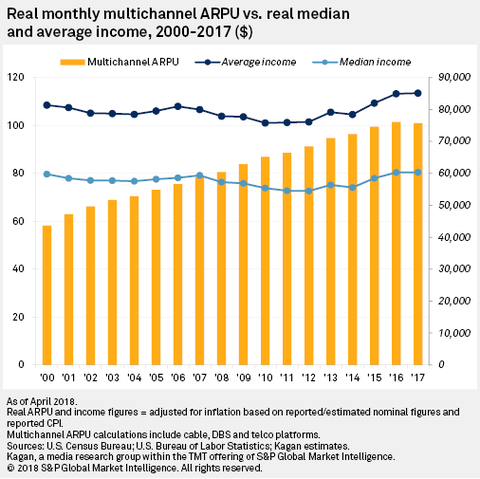Pay TV has become dramatically less affordable since 2000, research company Kagan, S&P Global Market Intelligence notes, with the average bill increasing in price by 74%, even adjusted for inflation.
The affordability gap is “squeezing penetration rates, particularly among the more economically vulnerable households,” the research company added.
Indeed, as the chart below shows, prices for multichannel packages have steadily risen from just below $60 a month in 2000 to close to $100 in the peak year of 2016. Median wages, however, have remained flat—heck, they’ve actually fallen a bit.
Compounded annual gross revenue for cable, satellite and telco pay TV platforms rose at at a rate of 5.5% a year from 2000 to 2017.
RELATED: Major pay TV operators set to report losses of around 510K users in Q1, analyst says
The affordability gap, measured as a basic margin between consumer income and subscription price, steadily eroded from a “10” in 2000 to a “6” in 2014. (A slight increase in median and average wages has increased the margin the last three years.)
“The eroding legacy multichannel affordability partly explains the popularity of over-the-top services such as Netflix Inc. and Amazon.com Inc.'s Prime Video,” Kagan said in a statement.
Indeed, with competition “creeping on all fronts,” Macquarie analyst Amy Yong predicted yesterday that the major pay TV operators will report another 510,000 lost subscribers in the first quarter of this year.
